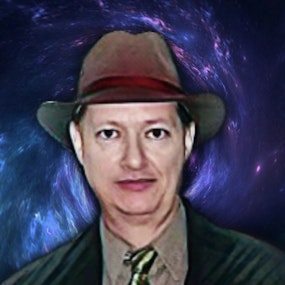You have had this experience: the novel you are reading throws a ton of invented names at you like a blizzard, makes up words for common items, has some variation of “coffee” that sounds almost like the word “coffee” but is spelled oddly, and stresses clothing styles like Vogue has issued a fashion show press release. Welcome to “Lazy World-building,” the nemesis of the smart, well-read reader.
Okay, wait a minute. The reason science fiction and fantasy novels are so damn hard to write is because they often have to build a world from scratch. In other genres, they can simply plop their characters and plot into some contemporary or historical space-time point and practically every reader will have a fairly comfortable grasp of the situation. Even if you know bean sprouts about 16th century China, they are humans with recognizable common traits. They are not Ogres or Dark Elves or Trinocs or Mesklinites, races that have to be well-defined to be understandable as characters and plot elements.
So why not allow for short-cuts into the fantastical that make the writing easier and speed up the process of getting the story on its rails and flowing fast? You know the answer: because short-cuts often lead to sloppy writing. When it comes to world-building, relying solely or mainly on words, foods, names, clothing, and made-up calendar elements to “sell” your creation is poor craftsmanship. It’s using plywood rather than walnut: a cheap alternative you can’t burnish into something artistic because the core material is too friable.
Now you can build some great stuff out of plywood, with time and careful attention to details. But true art requires starting with better basic materials, and in world-building this means going deeper. Ask yourself these questions, and create your own variants to improve your world-building:
- How do these unknown people(s) communicate aside from words? What emotions do they express or suppress? How do the move and how does this vary with emotions?
- What do they regard as Beauty, Art, Leadership, Honor/Dishonor, or Happiness? How do these notions affect their social connections, if any? How do they think their way through abstract or concrete issues?
- What do they think about death, the young, the old, animals, other sentient beings, technology, disease, and other core concepts of survival and growth?
- How do they perceive time, the future, their past, the shared present, the value of connecting to others (including why and how), their system of justice, and how do they define value (personal, economic, political, etc.)?
You don’t need to define all of these. If you actually want to write the stories of that world, pick several “anchor points,” develop them in terms of “If this, then that” (second-order thinking), and continue to define the world using the stories themselves. World-building that focuses on only building the world’s details is not writing: it is creative procrastination.
If you want examples of this “second-order” deeper form of world-building, check out Ursula K. Le Guin (a true master of this skill), or track down Trinocs in Larry Niven’s Ringworld, or Mesklinites in Hal Clement’s Mission of Gravity. Notice how the beings in these novels are more fully-formed, better-defined, 3D rather than 2D, through the use of more nuanced and thoughtful presentation of the details that define them. Rest assured, the results of such world-building were not the product of slapdash writing, but the outcome of well-controlled imagination and insight, the marks of professional writers that you can emulate.









